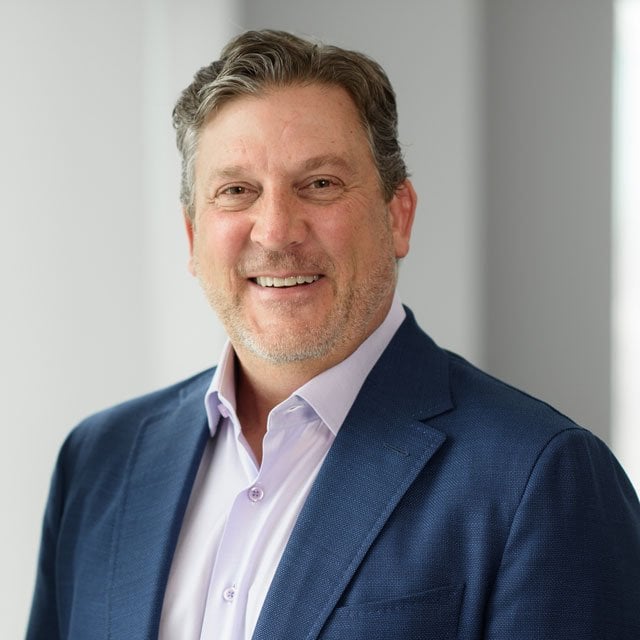The Do's and Don'ts of Firing a Friend

You’ve launched an RIA with another advisor who’s a personal friend. You’re the CEO. For about two years, the partnership goes swimmingly.
But in the third year, your friend comes down with “the disease of complacency,” as described by Andrew Marsh, executive in residence of Dynasty Financial Partners, in an interview with ThinkAdvisor.
That’s when you need to take off your “friend hat” and don your “boss hat” to “have an honest conversation about expectations and accountability,” Marsh says.
“Complacency leads to entitlement,” he argues.
As executive in residence since April of this year, Marsh coaches Dynasty’s network of independent RIAs as part of the firm’s “Advisor to CEO” program.
He co-founded and, for 17 years, was president and CEO of Richardson Wealth (formerly Richardson GMP), one of the top independent wealth management firms in Canada.
Under his leadership, the company grew to managing more than $30 billion in assets in 15 years before it went public in 2020.
In the interview, Marsh discusses the signs of advisor complacency and when to wear those “friend” and “boss” hats.
He also explains how to inspire a partner friend to get their act together again, and, in the absence of such pivot, the do’s and don’ts of firing them.
Above all, Marsh, a member of the Centre of Fiduciary Excellence and the Aspen Global Leadership Network, stresses the need to be “absolutely clear on expectations and accountability” to try to prevent and deal with a partner’s detachment or diminished efforts.
ThinkAdvisor recently interviewed Marsh, who was speaking by phone from his Toronto base.
Marsh’s advice to exhausted, overextended RIAs is to “pick a lane”: the middle-of-the-road status quo lane, CEO lane or rainmaker-advisor lane.
“These are things about a maturing business that you have to figure out,” he says.
Here are highlights of our conversation:
THINKADVISOR: Sometimes it’s necessary to fire a friend whom you’ve gone into business with. The RIA space is no exception. How does the CEO handle that?
ANDREW MARSH: When you start a firm together, it’s very collegial. You’re, kind of, a band of partners that have this badge of honor of taking a big risk together and making the jump.
But then the issue may become: How do you manage someone that isn’t performing at the level that you expected or that you need from them?
When does this show up?
I would think that in the first year or two of an RIA firm, it’s all hands on deck, and everyone is excited.
Probably in the third year, the rubber hits the road in terms of workload, and the reality of running your own business and how close that was to your expectations [hits].
From what I’ve seen so far in the RIA world, typically, it’s that three-year mark, where there’s a steady [level] of work being done.
That’s when people’s work ethic and approach to the business start to become evident — and maybe frustrating.
What would make it frustrating?
Some people get complacent. They get established and then immediately go into a comfort zone. Complacency leads to entitlement. They’re starting to feel that they’re safe from expectations.
This is very frustrating to the other [potential] partners if they’re still committed to working hard and growing and doing everything to see the firm succeed.
How does the CEO deal with this issue when the complacent person is their friend?
By taking a step back from the personal relationship and clarifying expectations and accountability of each other as partners or as manager and employee.
What’s been your own experience with the company you owned?
At first, I thought that a [complacent] partner would figure it out for themselves because I knew they were committed and loyal.
But I learned that you have to work twice as hard to clarify expectations with a friend than with an employee who’s not a friend to make sure you’re on the same page in terms of what you need from each other.
What are the signs of complacency?
It’s in the person’s overall work-effort level, and [manifests itself in] many different ways.
Even in the new hybrid Zoom/[in the office] world, the quality of work and overall result can reflect the disease of complacency.
How does it show up when people are required to be physically in the office?
They spend a lot of time outside the office. Maybe the person is taking [too much] vacation time or playing golf.
When everybody else is in the office working away, this person isn’t putting in the same kind of time. That’s an opportunity to clarify expectations.
But if they’re out meeting clients and prospects, then that has to be known by everyone who might be looking sideways at them.
What things are less noticeable?
How engaged they are in group meetings.
Sometimes it’s in their attitude or a comment they make that sends a message that they’re not as engaged and feel safe from expectations.
If it’s a producing partner, results are important. So if the pace of growth of their business or revenue levels aren’t keeping up with the growth of others, that’s another sign.
What if they just don’t have the capabilities or talent to handle responsibilities in a firm that’s growing larger and larger?
At my former firm, we used [an analogy] with sandboxes. As everybody’s sandbox got bigger, how many people could grow into their new sandbox, and how many were stuck in their smaller sandbox?
You’ve got to make an assessment of people to see how well they’re evolving as the business grows. Some people can’t [evolve]. This is where having very open and direct communications to clarify accountability and expectations come in.




